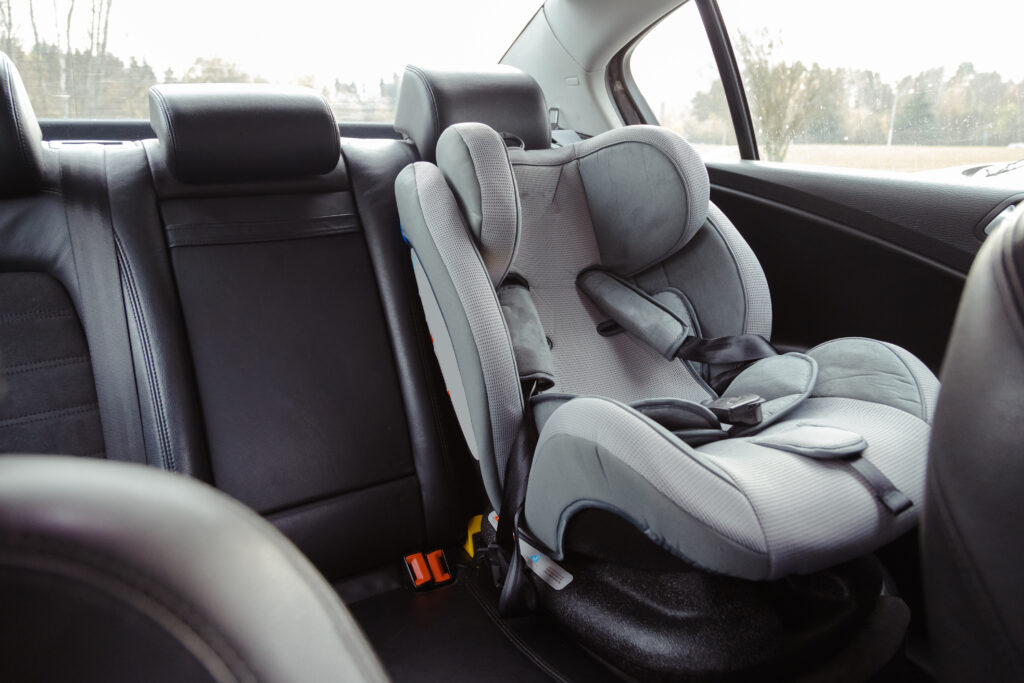Expert tips to prevent child deaths in hot cars
As temperatures rise, risk of heatstroke and death increase for children left in vehicles
Every summer, children get heatstroke or die as a result of being left unattended in a hot car, but a Texas A&M AgriLife Extension Service safety expert says there are ways to avoid tragedy.
Cindy Kovar, AgriLife Extension program manager for Silver Drivers Safe Texans, said the first thing to remember is that as temperatures increase, so does the likelihood of heatstroke and death for any child left in a vehicle.
According to the Texas Department of State Health Services, Texas is among the states with the highest number of child deaths from being left in hot cars. Heatstroke is the leading cause of non-crash, vehicle-related deaths in children 14 and younger, with an average of 37 children dying annually. Children are far more vulnerable to heat stroke than adults.
“Temperatures in parked vehicles rise very quickly, and a child’s body temperature rises three to five times faster than an adult, so the combination can be deadly,” Kovar said. “In hot weather, the temperature inside a vehicle can increase by almost 20 degrees in as little as 10 minutes.”
Tips for avoiding hot car deaths

More than half of child deaths from leaving children in a vehicle occur because their parent, grandparent or other caregiver had forgotten about them. Kovar said such deaths are entirely preventable by taking a few precautions.
Safe Kids Worldwide and its “ACT” awareness initiative have developed safety tips to reduce the possibility of a child being left alone in a hot vehicle.
The “A” in ACT stands for “avoiding” heatstroke-related injury and death by never leaving a child alone in a car, not even for a minute. It also means awareness of making sure a vehicle is locked when not in use so a child can’t get inside.
The “C” is for “creating” a visual reminder that a child is in the back seat, such as placing a phone, gym bag, briefcase, purse or other frequently used item in the back seat with the child.
The “T” stands for “taking action,” particularly calling 911 if you see a child alone in a vehicle.
“If a child is locked in a car, get them out as quickly as possible and dial 911 immediately,” Kovar said. “Emergency personnel are trained to evaluate and check for signs of heatstroke.”
Kovar offered these additional safety tips:
- Teach children to never play in and around vehicles, especially vehicle trunks.
- Never leave keys in a car. Store vehicle keys out of children’s sight and reach.
- Keep your vehicle locked to prevent children from getting inside without your knowledge.
- Always look in the vehicle — front and back — before locking the door and walking away.
- When exiting a vehicle, make sure no children are sleeping on the seats or hiding under them.
Technology can help avoid a disaster
Kovar said technology can be another way to help remember there is a child in the vehicle. Devices designed to help prevent adults from leaving children in hot vehicles include:
- The WAZE traffic app has a setting that reminds a driver to check the back seat once they have reached a destination that was entered into the app.
- A battery-operated sensor system that works with a child safety seat and is synchronized to an app can send a notification to the driver’s phone to check the vehicle once it has stopped.
- Some car seat manufacturers offer sensor technology using a smart chest clip that syncs with the vehicle computer and lets the driver know if the chest clip on the car seat is not unlocked within a short time after the ignition is stopped.
- A built-in back seat reminder sensor system is available in some vehicles. The system activates when the rear door is either opened or closed within 10 minutes before the vehicle is started or while it is still running.
“It’s important to have different levels of safety and redundancy in keeping children safe from being left unattended in a hot car,” Kovar said. “You can’t ever be too careful or too vigilant when it comes to child passenger safety, especially when the consequences are too horrible to consider.”


